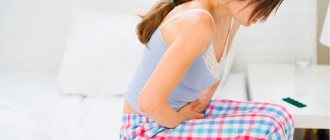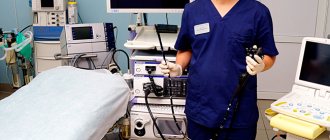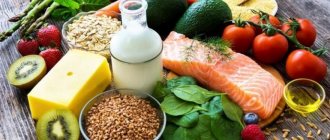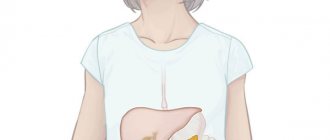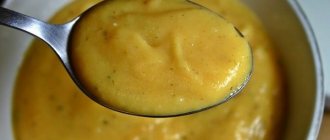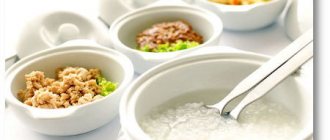Everything depends on the functioning of the intestines: the absorption of vitamins, the beauty of skin and hair, immunity, slimness. The list can be endless. Any disease of this organ will lead to disorder of the whole organism. A diet for the intestines will help cope with the problem.
Indications for diet
Special medical nutrition or diet is prescribed for intestinal problems or after surgery. Sometimes it is needed before treatment in order to prepare the diseased organ, relieve inflammation and pain. But the diet can also be prescribed for preventive purposes. Sometimes it is needed to eliminate problems with other organs and systems.
Main indications for diet for intestinal diseases:
- enteritis;
- colitis;
- dyskinesia and dyspepsia;
- colitis of various origins;
- inflammatory processes;
- motor skills disorders;
- gastroenteritis;
- Crohn's disease and other infectious diseases.
Tumors in the intestines are also an indication for special nutrition. A diet is needed, regardless of their origin, type, location. Some people are forced to eat for the rest of their lives. First before the operation, then after it. Proper nutrition is necessary if the patient has a colostomy.
As for age or gender restrictions, there are none. The diet for a sick intestine is suitable for children and adults, men and women. It will not harm if the organ is in perfect order and fully complies with the basic principles of therapeutic nutrition. This system has more advantages than disadvantages. But, if a person has other chronic diseases, the diet must be agreed upon with the attending physician. There may be some nuances when choosing products and dishes.
If you can't see a doctor
Not every person can leave work or home at any time and go to a gastroenterologist. Or at least visit your local physician or surgeon at the nearest hospital. A therapeutic diet for intestinal disease is the most harmless way to help yourself.
Symptoms of intestinal problems:
- discomfort, pain in the lower abdomen, in the navel area (around it);
- mucus in stool;
- constipation, less often diarrhea;
- attacks of nausea;
- flatulence, an abundance of gases accompanied by rumbling;
- loss of strength, apathy;
- a slight increase in temperature is possible.
Acute pain, blood, and other complex symptoms should scare you. They don’t just appear; they require calling an ambulance. If the symptoms are not very bright, then it is allowed to start therapy with a diet. When an accurate diagnosis is made, the doctor will begin treatment with nutrition.
Basic rules of diet for a sick intestine
The word “diet” already implies the refusal of certain foods. You will need to master the rules of nutrition and introduce them into your life.
What is the essence of a diet for intestinal problems:
- exclusion of irritants. It is important to remove overly salty and sweet foods from your menu. You should avoid any pickles of smoked meats; marinades with vinegar and citric acid are prohibited. All spices and hot spices are prohibited;
- mechanical sparing. It is important to eat foods of the correct consistency. Preference is given to liquid, creamy soups, vegetable purees, twisted meat, cutlets, meatballs;
- sparing in quantity. It is important to make small portions. The size of a single meal should not exceed 250 ml. And the number of meals can reach 6 or 8 times a day;
- reduction in symptoms of flatulence. Remove from the diet foods that provoke the formation of gases, rotting, and fermentation;
- absolute ban on alcohol. This is one of the strongest intestinal irritants that should be removed for a long time;
- supplying the body with vitamins, minerals, proteins, carbohydrates and fats. To do this, it is important to stick to a balanced menu.
Taking medications has a great impact on the condition of the intestines. Some medications provoke the development of dysbiosis. There are medications that can interfere with a therapeutic diet. Very often, pain in the gastrointestinal tract occurs after taking vitamin complexes, especially on an empty stomach. It is important to take all this into account when treating the intestines.
Diet goal
There are many popular nutrition systems, from Dukan to the Kremlin diet. Most of them are aimed at losing weight. Therapeutic diets are much less known; they are distinguished by their limited scope and specific principles.
Detailed composition of the therapeutic diet:
- Limits the formation of food intolerance.
- Eliminates deficiency of essential substances.
- Restores the activity of motor function.
- If the disorder is dysbiotic in nature, nutrition also normalizes the balance of microflora.
The main aspects of a healthy diet are as follows:
- In addition to the therapeutic effect, the diet is designed to stop the possible exacerbation of the disease.
- The eating schedule should not be disturbed by shifting in time.
- It is important to maintain a variety of foods you eat.
- The nutritional system is tailored to the body of a specific person, taking into account individual characteristics.
- The correct balance of elements, with attention to the calorie content and chemical composition of dishes.
- Maintaining precise cooking regimes.
- The patient's personal diet should be calculated, taking into account possible concomitant diseases.
- Combining nutrition with other health factors, such as physical activity, drinking water from mineral springs, giving up bad habits, etc.
Diet for intestinal exacerbation: what is prohibited?
During the therapeutic diet, foods that cause bloating are excluded from the diet. Food should contribute to regular cleansing of the intestines, sparing the functioning of the diseased organ. In addition to the restrictions above, other categories of products are prohibited.
What not to eat when dieting:
- baked goods, pasta, sweets and other flour products with yeast, unhealthy fats, without fiber. They provoke fermentation and can cause constipation;
- rich broths. You can’t even eat it from bones without fat. But you can use light meat and fish broths;
- chocolate, candy, ice cream. Strong irritants for the intestines. If consumed, they may cause an exacerbation;
- rice, semolina. Prohibited only for constipation, cause difficulties with passage, and contain a lot of starch. But sometimes you can add a small amount of rice to meatballs and cutlets, if you are not prone to constipation;
- legumes, fresh vegetables, fruits, a large amount of greens. White cabbage is especially dangerous. These products can provoke severe colic and complicate treatment;
- whole milk, regardless of fat content;
- fried eggs;
- honey, jam, other sweets containing sugar. They suppress beneficial microflora, disrupt intestinal function, and provoke putrefactive fermentation.
During the therapeutic diet, reduce the consumption of tea and coffee as much as possible. It is not recommended to overuse juices, starch-based jelly, and sour compotes. All drinks must be prepared at home. Industrially produced juices, lemonades and compotes are strictly prohibited.
It is possible and it is not possible
Diet No. 4 for intestinal diseases must become a new way of life if you want to prevent the disease from returning. So, you can eat:
- Soups. The first courses do not overload the gastrointestinal tract, but at the same time they allow you to saturate the body with everything necessary. It is very good if they include a lot of vegetables.
- Rusks made from wheat flour.
- Meat and fish. These are sources of protein, which is a building material.
- Eggs.
- Porridge.
- Boiled vegetables and baked apples.
- Tea.
From this you can come up with quite a lot of different dishes. You won't have to suffer from hunger, which is a big plus. A diet for diseases of the stomach and intestines involves avoiding the following foods:
- Fatty broths.
- Sausages and lard.
- Canned food.
- Hard-boiled, raw and fried eggs.
- Pasta, legumes and pearl barley.
- Raw vegetables.
- Fruits and berries.
- Strong coffee with milk.
Diet for intestines - what can you eat?
So that a diet for intestinal disease does not paint life exclusively in gray colors, it is important to understand why it is needed. You will also need to learn all the rules, prepare yourself mentally, and thoroughly master all the information. Next, study the names of permitted products and create a diet menu for a diseased intestine. All this and other information can be found below.
Gut-healthy grains
Fiber is needed, but brown rice, pearl barley and other types of coarse grains can cause intestinal pain. Therefore, they often choose soft and viscous porridges made from buckwheat, millet, or oatmeal, barley and wheat porridge after boiling.
If the patient suffers from diarrhea or is not prone to constipation, the doctor may allow rice and semolina with a viscous consistency. Cereals are used not only in porridges. They are added to meatballs, casseroles, and soups. You can prepare minced vegetables and cereals.
Vegetables and fruits
Vegetables are consumed exclusively boiled, steamed, stewed and after chopping. Coarse fiber is prohibited. The diet is based on pumpkin, zucchini, potatoes and carrots. You can have beets, peppers, tomatoes. During an exacerbation, exclude onions and garlic. During a favorable period, you can add it to dishes without overusing the quantity. Cauliflower and broccoli are allowed. Unlike white cabbage, these species do not provoke fermentation in the intestines.
As for fruits, you can eat different types that are not sour, but after baking, steaming, or boiling. The same goes for berries. During the period of remission, doctors sometimes allow grated fresh apple, banana, pear (if there are no problems with stool, it provokes constipation).
Dairy products for the intestines
Whole milk is prohibited, but all types of fermented milk products are welcome. It is advisable that they be fresh with a short shelf life. Only kefir that is less than 3 days old will loosen stools.
What else is possible:
- fermented baked milk;
- Varenets;
- low-fat cottage cheese;
- natural yogurt.
Sour cream is also allowed, but only 10% as a dressing for dishes. For example, you can add it to sauce for cutlets when stewing or season soup with a teaspoon of the product. The same amount of butter can be used to season dishes. No more than two teaspoons per day. Eggs only in the form of an omelet, soft-boiled. Can be used in soups, added to boiling broth.
Meat and fish products in intestinal treatment
The body needs proteins, but in case of intestinal diseases it is important not to overuse them. A large amount puts a significant burden on the diseased organ.
What you can do:
- beef, veal;
- turkey, chicken, quail;
- lean fish.
All this is used for broths, in cutlet mass. You can twist meat and fish products after cooking, add them to porridges and purees.
Pastries and bread
It is advisable to exclude this group from the diet. But sometimes you can use yeast-free dark bread with rye flour. But only yesterday’s or the day before yesterday’s baked goods. It is advisable to remove the crusts and eat only the crumb. Dried homemade crackers without crusts are allowed. During the period of remission and with diarrhea, the doctor may allow prolonged or biscuit singing.
Colon cleansing as disease prevention
Grapefruit is a product that removes salts and toxins from the body.
Since ancient times, colon cleansing has been considered the best means of prevention for various diseases, not only those of the gastrointestinal tract.
Waste substances regularly remain in the intestines, which, normally, the intestine itself should remove.
However, with poor nutrition or the influence of other factors, the functionality of the intestine can be impaired, which over time can lead to such serious consequences as diabetes, intestinal cancer, hemorrhoids, and myocardial infarction.
To prevent unpleasant manifestations, you need to include in your diet foods that cleanse the intestines of toxins. There are special programs for cleansing the intestines that allow you to individually select products for each person.
However, for any program there is one general requirement - to maintain a plentiful drinking regimen (at least 8 glasses of water per day). Each day of cleansing should begin with a glass of water at room temperature drunk on an empty stomach. Products that can cleanse the intestines:
- Grapefruit. Removes salts and toxins from the body, increases appetite, cleanses the intestines. Grapefruit juice contains more nutrients than any other 100% fruit juice.
- Prebiotics and pribiotics. Effectively cleanse the intestines and increase healthy microflora.
- This includes all fermented milk products, bananas, sauerkraut, onions, and garlic.
- Whole grain cereals. If prepared correctly, they effectively cleanse the intestines.
- Buckwheat, millet, oatmeal, and barley will be useful.
- Products containing fatty acids. Vegetable oils, fatty fish, seeds, seafood, seem to lubricate the intestines from the inside, thus promoting the removal of toxins.
- Beets and carrots. Beets are best consumed boiled; carrots can be eaten raw.
- Edible algae and sea vegetables. These products are low in calories and contain large amounts of minerals and vitamins. They normalize intestinal function; many bind toxins and remove them from the body.
Laxatives such as castor oil, hay grass, salt water, and magnesia are also suitable for quickly cleansing the intestines. It is important to know that with serious intestinal diseases, the absorption of food can be very difficult. Therefore, nutrition should be sufficiently balanced and high in calories. However, you should not eat foods that increase the load on the digestive organs.
About irritable bowel syndrome - in a detailed video:
Read along with this article:
- Anatomy of the human intestine: what's what
- Small intestine: length and role in the digestive process
- What should be the diet for intestinal inflammation?
- Anatomy of the colon and its main functions
- Superficial colitis - classification, diagnosis and treatment of the disease
- Diet for Crohn's disease: what is possible, what is not?
- What should be the diet for constipation in adults?
- Diagnosis of volvulus: symptoms and treatment
- Diseases of the small intestine: features, causes, treatment,…
Diet cooking
The method of cooking is dictated by the permitted products. But, as mentioned earlier, all irritants are prohibited. The food is prepared as much as possible without spices; you can only add a little salt and season with a small amount of herbs.
There are also strict requirements for the consistency of dishes. No hard pieces! Therefore, any dish or product requires chopping. Since the diet will be followed for a long time, sometimes it is needed for life, you should take care of purchasing a powerful blender. It is difficult to knead or wipe food manually; not all products lend themselves to this.
How to prepare meals for a diet:
- just cook. These can be individual products or soups, stews. For cooking, a liquid is used, which, if necessary, will be broth. Since fatty foods are prohibited, skin, fat, and any layers must be removed from meat and fish immediately;
- steam. This option is especially good if you want to prepare something like a salad or get an appetizing side dish. When steamed, products retain their aroma and taste as much as possible;
- simmer with water, broth, sauce. Unlike cooking in water, such products have a more pronounced taste and aroma. Dishes are prepared over very low heat in a saucepan or frying pan. You can use multicookers;
- baking in the oven, microwave. You can allow baked dishes, but do not overuse them. They are mainly prepared in the oven. The mode and temperature are dictated by the selected products and recipes. It is important not to achieve a crust. To do this, cover the mold with foil and a lid.
The diet for intestinal diseases in adults is excellent for feeding children of any age. It can also be used for weight loss. Often in the presence of stomach problems. They often complement intestinal diseases.
Diet for intestinal disease: menu for every day
The table below shows the standard treatment menu for intestinal problems. This is the diet that people who have chronic diseases adhere to. The diet is suitable for cancer patients who have undergone intestinal surgery. It can also be used for preventive and restorative nutrition in cases of bloating, increased gas formation, and previous intestinal infections.
| Monday | Tuesday | Wednesday | Thursday | Friday | Saturday | Sunday | |
| Breakfast | Boiled buckwheat in water, butter | Knitting oatmeal with butter (without milk) | Liquid millet porridge with pumpkin | Boiled buckwheat in water, butter | Liquid semolina porridge | Pumpkin porridge with any grain added | Liquid rice porridge |
| Lunch | Stewed carrots | Applesauce | Mashed banana | Pumpkin puree with apple | Baked apple | Boiled beets with sour cream | Pear puree |
| Dinner | Vegetable soup | Chicken broth with meatballs | Soup with rice and fish | Chicken soup with vegetables | Potato soup with meatballs | Creamy pumpkin soup with vegetable broth | White fish soup with various vegetables |
| Snack | Soft-boiled egg | Boiled carrot puree | Steam omelette | Roasted beet puree | Fish aspic | Egg omelette | Meat soufflé |
| First dinner | Mashed potatoes, twisted beef | Cauliflower puree, steamed chicken cutlet | Steamed fish, buckwheat porridge | Zucchini puree, meatballs | Wheat porridge with boiled meat | Stewed vegetables, fish meatballs | Steamed protein omelette |
| Second dinner | Kefir | Ryazhenka | A portion of low-fat cottage cheese | Natural yogurt | A glass of kefir | Cottage cheese | Varenets |
How to switch to a normal diet?
Diet No. 4 should be maintained by the patient for 5-7 days. It is not recommended to follow it for longer, since the monotony of products will not allow the body to receive all the necessary vitamins and minerals.
You need to introduce new food gradually every day, adding a couple of new foods in small quantities. If the intestines do not work well after some food, then you should temporarily exclude it from the diet and check how the body reacts.
Table No. 4 is often prescribed by doctors for diseases of the intestines and other gastrointestinal organs. The diet is also recommended for people after intestinal surgery. If you do not comply with this requirement, the rehabilitation process will be long, and complications may also arise. Therefore, it is better to eat as the doctor tells you for several days, so that later there will be no problems with the intestines.
Lack of fluid in the diet is one of the main causes of constipation. To get rid of it in 3 days, you need to drink a simple remedy every day.
Video: expert advice
Diet for a sick intestine during an exacerbation
During an exacerbation or after surgery, a gentle diet for intestinal diseases is prescribed. It excludes baked products and meat broths. For several days, the lightest vegetable diet with the addition of fermented milk products is observed.
A sample menu looks like this:
- Breakfast. Liquid oatmeal with water without oil. Long-cooked flakes are used. After cooking, chop the dish.
- Snack: boiled and pureed zucchini or pumpkin. You can dilute the puree with the liquid in which the vegetable was cooked.
- Dinner. Vegetable soup in water (potatoes, zucchini, broccoli, pumpkin, carrots), crushed to a creamy consistency.
- Snack. Steamed egg white omelette or low-fat pureed cottage cheese.
- Dinner. Light potato or carrot, pumpkin puree without additives. You can take other vegetables.
- For the night. A glass of not very sour kefir or low-fat fermented baked milk.
For a gentle option, dishes are mainly boiled in water, since purees and porridges require a liquid consistency. The maximum serving size is reduced to 200 ml. If necessary, you can increase the number of meals up to 10 times per day. You can't eat 2 hours before bedtime.
Diet for pain in the pancreas. Nutrition for pancreatitis: principles and recommendations
Pancreatitis is inflammation of the pancreas. Not everyone experiences this disease. It occurs when eating unhealthy foods for a long time, damage to the abdominal area, intoxication and problems with liver function. Typically, as the authors of the authoritative British Medical Journal Joe Hines and Stephen J. Pandol write, the disease develops slowly as a result of regular intake of fatty and fried foods, especially fast food, into the stomach. No less significant harm to the body is caused by harmful addictions.
How can an ordinary person find out that he is developing pancreatitis? The symptoms are usually not encouraging. As a rule, patients notice:
- nausea;
- sharp pain in the abdomen;
- diarrhea;
- weight loss.
Additionally, discomfort can spread to the entire body. In this situation, it is quite difficult to understand where exactly the pain is localized. At the first symptoms of pancreatitis, make an appointment with your healthcare provider immediately. This way you can protect yourself and prevent the disease from developing into a chronic stage.
You can learn more about dietary nutrition and recommendations for diagnosing pancreatitis in the scientific article by Novosel N.V., Kokueva O.V., Abrahamyan V.V. from the Russian State Budgetary Institution Kuban Medical Institute.
In everyday practice, patients often turn to me and my colleagues for help with pancreatitis. Scientific studies and analyzes show disorders that occur in the patient's body. In their work, doctors use this information to develop therapy and a special diet.
If the pancreas, a diet for the restoration of which is selected by a specialist, is at least once inflamed, then you will have to follow the doctor’s instructions on the menu throughout your life. Eating healthy food allows the body to relax and helps eliminate existing illness.
Photo: Leonovich S.I., Kondratenko G.G., Protasevich A.A., Neverov P.S. Acute pancreatitis. - M.: Medicine, 2009.
Medical dietary recommendations when the pancreas hurts:
- Frequent split meals 5–6 times a day.
- Food rubbed through a sieve or crushed in a blender that does not cause irritation to the mucous membrane.
- All dishes are consumed boiled, baked, or steamed.
- To stabilize and strengthen the body, the amount of proteins entering the body is increased. Doctors recommend eating lean poultry or rabbit meat, fish such as pike or cod, as well as fermented milk products.
- Reducing the consumption of fats and carbohydrates. Nutritionists allow eating wheat, oat and buckwheat porridge, as well as small vermicelli.
- Drinking plenty of purified water throughout the day. Doctors advise drinking 2 liters of water per day.
If pancreatitis begins to manifest itself, treatment should include not only PN, but also the fight against addictions.
My colleagues from the University of Magdeburg also discussed dietary adjustments for people with digestive disorders in their scientific article.
The diet for chronic pancreatitis completely prohibits eating meat broths and dishes based on them. To prevent the pancreas from causing pain in the abdominal area, you need to remove from the menu:
- smoked meats;
- fried foods;
- reduce the amount of salt used;
- limit your consumption of sweets.
Medical experts recommend avoiding cabbage, sorrel and radishes. Sugary drinks, soda and alcohol are completely excluded from the menu of people suffering from problems with the pancreas.
Cleansing diet for the intestines
Many people confuse a healing diet with a cleansing diet. In the first case, you need to calm the intestines as much as possible, restore its function, remove irritation and inflammation, and prescribe a gentle diet. The cleansing diet is prescribed to people with completely healthy intestines. The diet in this case is completely contrary to the menu proposed here.
What to eat on a cleansing diet:
- raw vegetables and fruits. Especially cabbage and other types with coarse fiber. The amount can reach up to 1.5 kg per day;
- unrefined cereals, bran. Mainly brown rice, pearl barley. Bread made from wholemeal flour is allowed;
- laxative products. These are boiled beets, prunes, and sometimes an enema is additionally prescribed. But it is important to do this after consulting with your doctor;
- a large amount of water. During colon cleansing, it is important to drink at least 3 liters;
- kefir and yogurt with live bacteria. You can buy or prepare it yourself, but it is important to consume fermented milk products as fresh as possible.
Meals on such a diet are fractional, but there is no need to limit the size of portions. The more vegetables enter the body, the better the fiber will cleanse the intestinal walls and rid it of old deposits.
Important! The article is for informational purposes only. Before using a therapeutic diet, you should consult your doctor!
